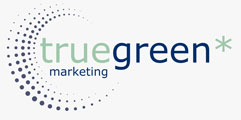Ever wondered what CMS, CTR, CPC or Net-Zero stood for? Here’s a quick A-Z jargon buster…
Accessibility – The ease with which users, including those with disabilities, can navigate and interact with a website. Ensuring accessibility aligns with sustainable web practices by making content universally accessible.
Browser – The software used to view websites, such as Chrome, Firefox, or Safari.
CMS (Content Management System) – A system that allows users to update and manage website content without needing extensive technical knowledge. Examples include WordPress and Joomla.
Domain – The part of your website address following “www,” such as arcticbee.co.uk. A relevant domain can enhance a site’s visibility and relevance in search engines.
Responsive Design – Website design that adapts seamlessly to different devices (desktop, tablet, mobile), ensuring a consistent user experience across platforms. This approach supports sustainability by reducing the need for multiple site versions.
SSL Certificate – A security feature that encrypts data between the user’s browser and the website. Websites with SSL certificates display https:// and a padlock symbol, crucial for secure transactions.
Google and SEO Terms
Algorithm – The set of rules and calculations that search engines use to rank web pages in search results. Staying updated with algorithm changes can improve search engine rankings and visibility.
Backlinks – Links from other websites pointing to your site. Quality backlinks can boost your site’s authority and search engine ranking.
CPC (Cost Per Click) – The amount paid each time a user clicks on a paid ad. Effective management of CPC can optimize your advertising budget.
CTR (Click-Through Rate) – The ratio of users who click on an ad or link to those who view it. A high CTR indicates effective ad or content relevance.
Indexing – The process by which search engines crawl and organize content from your website, affecting its visibility in search results.
Impression – The number of times a website or ad appears in search results. Tracking impressions helps gauge the reach of your content.
Landing Page – The specific page a user arrives at after clicking a link or ad. Optimizing landing pages can improve conversion rates.
Metadata – Information about your website used by search engines to understand its content, including keywords, descriptions, and titles. Accurate metadata enhances search visibility.
Page Rank – A system used by Google to determine the importance and relevance of a webpage based on its links and content. Higher page ranks generally lead to better search results.
Position – The ranking of your website in search engine results. Regularly monitoring your position helps in optimizing SEO strategies.
Schema Markup – A type of structured data used to help search engines understand the content of your site, often resulting in rich snippets that enhance search visibility.
SERP (Search Engine Results Page) – The page displayed by search engines after a query, showing a list of results based on relevance.
Snippet – The preview of your page in search results, which can include text, images, or star ratings. Rich snippets can attract more clicks.
URL (Uniform Resource Locator) – The address of a webpage. A well-structured URL can improve both user experience and SEO.
XML Sitemap – A file that helps search engines understand the structure of your website, ensuring that all pages are indexed.
Sustainability Terms
Carbon Footprint – The total amount of greenhouse gases emitted by an organization or activity. Measuring and reducing carbon footprint is a key component of sustainability efforts.
CBAM (Carbon Border Adjustment Mechanism) – A policy tool used to adjust the price of carbon emissions for imported goods, ensuring that domestic industries are not disadvantaged by stricter climate policies.
Climate Neutral – Achieving a net-zero carbon footprint by balancing emitted carbon with offset measures, such as investing in renewable energy projects.
ESG (Environmental, Social, and Governance) – Criteria used to evaluate a company’s commitment to sustainability and ethical practices. ESG metrics help investors and stakeholders assess long-term viability and responsibility.
GHG Calculation (Greenhouse Gas Calculation) – The process of measuring the total greenhouse gases emitted by a company or activity. Accurate GHG calculations are essential for setting and tracking reduction goals.
Green Energy – Energy derived from renewable sources such as wind, solar, or hydro power, which have a lower environmental impact compared to fossil fuels.
Net Zero – The goal of balancing the amount of greenhouse gases emitted with the amount removed from the atmosphere, effectively reducing net emissions to zero.
Sustainable Web Design – Practices aimed at reducing the environmental impact of web development, including optimizing energy efficiency, minimizing server loads, and using eco-friendly hosting services.
Eco-Friendly Hosting – Web hosting services that use renewable energy sources to power servers, reducing the environmental impact of hosting.
Energy Efficiency – Using less energy to perform the same tasks, which can be applied to both website performance and overall operational practices to reduce carbon emissions.
Green Certifications – Recognitions awarded to businesses or products that meet specific environmental standards, often highlighted in marketing to demonstrate a commitment to sustainability.
UN SDGs (United Nations Sustainable Development Goals) – A set of 17 global goals aimed at addressing pressing environmental, social, and economic challenges. Businesses aligning with the SDGs contribute to global sustainability efforts.
Incorporating these terms into your green marketing strategy enhances the relevance and clarity of your communications, demonstrating a commitment to sustainability while engaging eco-conscious consumers and stakeholders.

